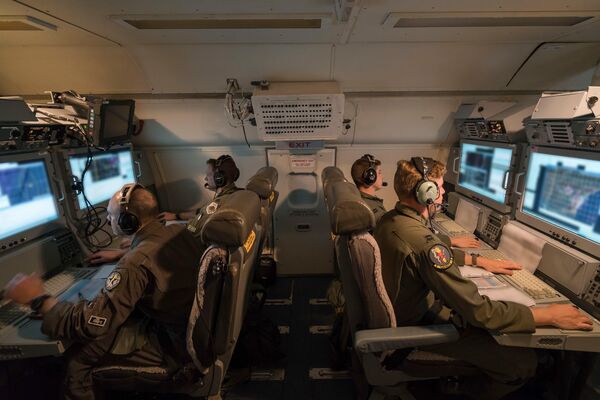- About
- Intara
- Capabilities
- Advisory
- Resources
- News
- Store
09 October 2023
Northrop Grumman E-8C JSTARS flies final combat mission
by Zach Rosenberg


US Air Force aircrew members from the 116th Air Control Wing (ACW), Georgia Air National Guard, monitor surveillance data while flying a night mission aboard an E-8C JSTARS at Robins Air Force Base, Georgia, on 13 July 2017. (US Air National Guard )
The Northrop Grumman E-8C Joint Surveillance Target Attack Radar System (JSTARS) flew its last operational mission on 21 September, the US Air Force's (USAF's) Air Combat Command (ACC) confirmed to Janes on 6 October.
The final mission lifted off and landed from Ramstein Air Base, Germany. A USAF statement about the retirement did not include any details about the final mission; ACC likewise declined to provide details.
Two E-8Cs remain in the fleet, and both aircraft will be retired to the boneyard at Davis-Monthan Air Force Base, Arizona, in November.
JSTARS is a Boeing 707-320C aircraft with an AN/APY-3 or -7 Side-Looking Airborne Radar (SLAR) mounted to its belly. The aircraft performed the ground moving target indicator (GMTI) for the USAF. The service operated 16 E-8Cs at its peak, beginning in 1991. The first E-8C was sent to the boneyard in February 2022.
The fleet has racked up 141,169 flying hours over 14,259 operational sorties, according to the USAF release.
“In the near term, the air force will continue to operate [a] ground moving target indicator capability on a number of other [intelligence, surveillance, and reconnaissance] platforms until a space-based capability can be fielded,” ACC told Janes.
Already a Janes subscriber? Read the full article via the
Client Login
Interested in subscribing, see What we do
The Northrop Grumman E-8C Joint Surveillance Target Attack Radar System (JSTARS) flew its last opera...
 Details
Details